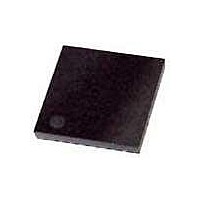WM9705SEFL/RV Wolfson Microelectronics, WM9705SEFL/RV Datasheet - Page 22

WM9705SEFL/RV
Manufacturer Part Number
WM9705SEFL/RV
Description
Audio CODECs STR AC'97 CODEC T/P Interface 48-pin
Manufacturer
Wolfson Microelectronics
Datasheet
1.WM9705SEFTV.pdf
(55 pages)
Specifications of WM9705SEFL/RV
Number Of Adc Inputs
1
Number Of Dac Outputs
1
Conversion Rate
48 KSPS
Interface Type
AC97
Resolution
12 bit
Maximum Operating Temperature
+ 85 C
Mounting Style
SMD/SMT
Package / Case
QFN EP
Minimum Operating Temperature
- 25 C
Number Of Channels
2 ADC/2 DAC
Lead Free Status / RoHS Status
Lead free / RoHS Compliant
Available stocks
Company
Part Number
Manufacturer
Quantity
Price
Part Number:
WM9705SEFL/RV
Manufacturer:
WOLFSON
Quantity:
20 000
WM9705
w
Figure 10 Headset Autodetect
This function would allow, for example, a stereo headphone to be used that had a microphone in
the connecting lead, and a switch. The switch changes the headphone into a mono headset with
microphone connected via the tip connection on the jack. If used in a product such as an MP3
capable phone it would allow the user to switch from headphone use to headset use by simply
switching a single switch in the headphone cable, so at the same time answering or initiating
telephone calls. It may also be possible to use the pull-up current to provide so called ‘phantom
power’ to dynamic microphones with appropriate choice of microphone.
When a headphone is connected the low impedance to ground of the headset pulls down the DC
level to near ground. If a headset with microphone is plugged in, the high impedance of the
microphone does not pull down the DC level on the tip connection, the DC on this pin now rising
to near positive supply. This change in DC level is detected, so allowing detection of change from
headphone to microphone, (or nothing plugged in of course). When this event is detected, the
headphone amplifier that drives the tip connection is turned off, and the signal on this pin is
routed instead to the MIC1 input as a microphone input.
This auto-detect comparator is enabled by setting bit HSCMP. The pull-up current is enabled by
setting bit MPUEN in register 5Ch and also toggles the interrupt signal on the PENDET pin.
When bit HSDT is set the mic1 input is connected to a comparator with a threshold set at mid-
rail. When the comparator output is low, then the headphone driver is enabled. When the
comparator output goes high (that is the pull-up current multiplied by the external impedance to
ground on the mic1 pin is greater than mid-rail), the headphone amplifier is turned off and the
mic1 signal is taken internally from the headphone output pin (39).
Figure 10 shows this function schematically. The output signal from the comparator is accessible
by reading bit HSCP in register 5Ch. Auto detect may be used by setting HSEN bit, or external
control by using the HSDT bit which is an over-ride that forces the headset tri-state and
microphone path switching function to occur.
PENDET
MIC AMP
LOGIC
reg 5Ch
reg 5Ch
reg 5Ch
HSDT
HSEN
HSCP
PEN
RIGHT
MIXER
MIXER
LEFT
reg 20h
MS
HSCMP
5mA
reg 5Ch
+
-
'0'
'1'
MPUEN
HPVOL
reg 5Ch
reg 04h
VMID
OFF
(hi-Z)
'1'
'0'
HPOUTR
HPOUTL
MIC1
MIC2
INTERNAL
MIC
HPGND
UP: MONO HEADSET WITH MIC
DOWN: STEREO HEADPHONE
PD Rev 4.5 July 2008
MIC
Production Data
L
PHONE
HEAD
R
22












